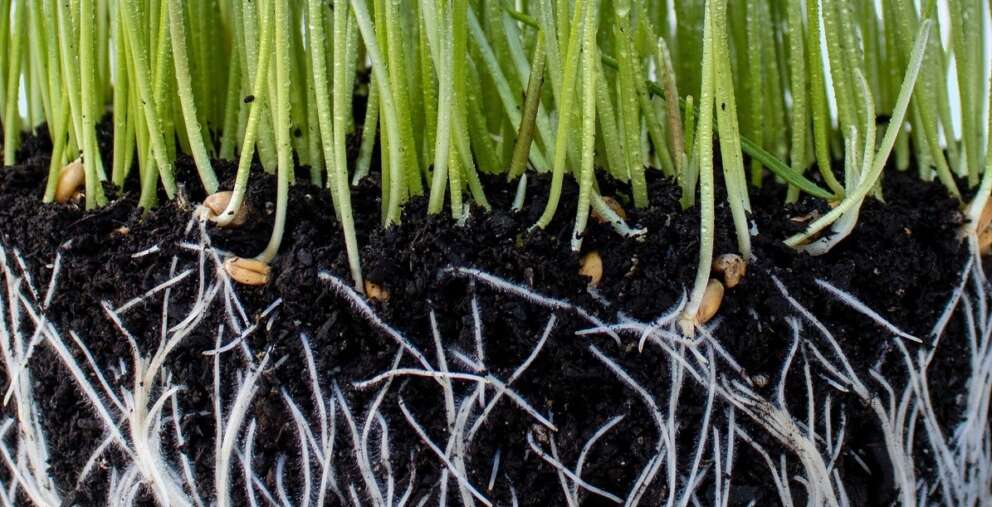Soil
Mycorrhizal fungi

Imagine a wider and more efficient network attached to the plant’s roots beneath the ground. A network composed of fungi with spreading spidery arms extending beyond the plant roots. These fungi are highly efficient at absorbing water and nutrients (particularly phosphorus) from the soil.
The fungi are living organisms that live in mutual benefit with the plant – the plant provides carbon and sugars for the fungi, as it provides the nutrient supply. There are many different sorts, each adapted to the host plant. Trees, for instance, have an extensive network of Ectomycorrhiza attached to their roots externally. Up to 15 different fungi might be attached to the tree - and within a whole wood there is a vast underground system, perhaps up to 8000 or more different species of fungi, often linking trees to each other.
The fungi in most herbaceous, ie leafy, plants, are called arbuscular mycorrhiza. Unlike the tree mycorrhiza which is in the soil, the arbuscular mycorrhiza fungi (AMF) are actually hosted within the plant root. From broad beans to tomatoes, strawberries to dahlias, most of our garden plants use mycorrhizas. The only type that doesn't is the brassica family ie cabbages, brussel sprouts, and beets.
However, research has shown that this beneficial fungi will not flourish in certain conditions:
- Soil which has too much phosphorus, from chemical fertilisers
- in ground repeatedly used for brassica growing
- Over cultivated soil, where the fungi have been disturbed and then weakened
- Fungicides will kill them
Do I need to use them?
You can buy mycorrhizas, and their use is well within the organic growing guidelines. It is sold as ‘Rootgrow’. However, they can be expensive. As with all organic growing, your soil needs to be rich in nutrients and of a good texture. The cheapest and easiest way to ensure this is to add your own compost or some well-rotted manure. See Home Composting.
Where mycorrhizal fungi are most needed is in soil that has been dug over too frequently. This could be in the garden of a new house, where diggers will have destroyed the fungi and where no nutrients ie compost have been added.
Growers with an established organic system and hearty soil sometimes use the fungi to help a plant establish itself more quickly.
However, don’t buy the fungi if you are new to organic growing and your soil has recently been treated with chemical fertilizers. There will be too much phosphorus in the soil already.
Further reading
Teaming with Fungi by Jeff Lowenfels. This guide to mycorrhizal fungi is clearly written for gardener and non-scientist alike. Fascinating stuff. It's part of a trilogy about organic soil, Teaming with Microbes *and *Teaming with Nutrients.
*Organic management of tilled agricultural soils results in a rapid increase in colonisation potential and spore populations of arbuscular mycorrhizal fungi * Paul Gosling, Ayako Ozakib, Julie Jonesa, Mary Turnera, Francis Rayns, Gary D. Bending. DEFRA 2010 This important piece of research highlights the greater presence of mycorrhizal fungi in organic as opposed to non-organic agricultural land.
Literature review on mycorrhizal fungi, 2003, prepared by Garden Organic (previously known as HDRA) for DEFRA.